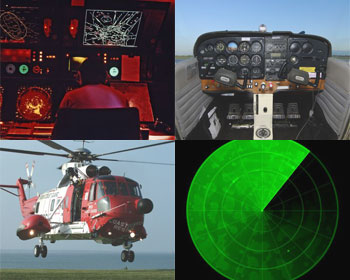A Publication of the
Applied Math and Science Education Repository

The AMSER Science Reader Monthly aims to provide educators with a useful package of information about a particular topic related to applied math and science by combining freely available articles from popular journals with curriculum, learning objects, and web sites from the AMSER portal. The AMSER Science Reader Monthly is free to use in the classroom and educators are encouraged to contact AMSER with suggestions for upcoming issues or comments and concerns at [email protected].
This month's AMSER Science Reader Monthly topic is Unmanned Aerial Vehicles.
Drones are Ready for Takeoff
Article
by Richard Conniff
Synopsis and resource annotations by Max Grinnell

Drone aircraft have been used in war zones for a number of years, and experimentation with other uses is becoming much more common. Could drones patrol our nation's borders in the future? Well, they already do in certain circumstances, and this piece by Richard Conniff from the June 2011 issue of Smithsonian Magazine looks into new developments in this field.
The piece begins by describing some of the settings in which unmanned drones have been deployed, including monitoring marine mammal populations off the coast of Alaska and looking at the nuclear emergency this past spring at Japan's Fukushima Daiichi power plant. These drones come in all shapes and sizes; some are as big as a passenger jet while others are as small as a sparrow.
The article continues with an examination of the proverbial ground zero for these drone experiments, which is centered around the Columbia River Gorge east of Portland, Oregon. A key figure here is Tad McGeer, who runs the Aerovel Corporation out of rather modest surroundings. McGeer and his partner Andy von Flotow both earned doctorates in aeronautical engineering from Stanford University, and they started working on drones twenty years ago. Then they had the idea that their early civilian drone (named the Perseus) would be able to take sophisticated measurements of atmospheric chemistry to track the hole in the ozone layer over the Antarctica. By the late 1990s, McGeer was working on flying a drone across the Atlantic, and in 1998 he was successful when one of his drones reached South Uist Island in Scotland. Soon the Pentagon came calling, but McGeer and his colleagues were more interested in focusing on civilian projects. McGeer and von Flotow's next project was for representatives of the tuna industry, whose fish-spotting helicopters had suffered a series of deadly crashes. For this endeavor, they developed the SeaScan, a drone with a camera turret and a user-friendly takeoff and landing from the deck of a ship. After developing the SeaScan, the US military adapted this technology to create the ScanEagle. The ScanEagle was a 40-pound surveillance device used during the Battle of Fallujah in 2004, and its primary objective was to spot would-be assailants and send real-time video to troops on the ground. The ScanEagle is also relatively cost-effective, with a price tag of around $100,000. Today, the question remains as to how quickly this type of unmanned technology can find a place in the civilian market.
The big issue currently is that these drones face major regulatory issues. Questions about privacy and civil liberties need to be addressed regarding the use of these drones to monitor civilians. Accordingly, the nonmilitary portion of the drone market is only estimated to grow to $500 million a year by 2020. However, the military market will remain quite robust, as it is already stands at $5 billion a year.
Currently, the FAA is considering rules that would allow unmanned drones that weigh less than 50 pounds to fly below 500 feet with less regulation. The hope is that this will create a boom in innovative practices with these devices, and that thousands of new applications will be found for these drones. There is also concern about the cost of operation, as unmanned aircraft still require at least two people for their operation. It remains to be seen what will come of these innovations, but it will be worth keeping tabs on the work of Ted McGeer, Andy von Flotow, and the others who will surely follow.
Found below is a list of useful resources that will illuminate and enhance understanding of the topics found within this article. The first link leads to an excellent set of lectures from MIT that address the fundamental concepts behind aerospace engineering, astronautics and design. Also, there are fine materials for educators here, including interactive exercises and lesson plans. The second link leads to a primer from NASA that covers basic aeronautic terms, including drag, lift, and thrust. The third link will whisk users away to a set of tutorials and fact sheets from the Aircraft Owners and Pilots Association that deal with aviation principles, safety, and repair. Moving on, the fourth link leads to the National Center for Atmospheric Research's page on real-time weather data and satellite movements, which may be one of the most significant areas for civilian drone use. The fifth link will take interested parties to a great site from Professor Daniel J. Jacob of Harvard University which provides pedagogical tools for those teaching atmospheric chemistry, including Power Point presentations and slides. The final link leads to the NOAA's Space Weather Prediction Center, which contains information about the world of space weather and topics like the ionosphere and radio wave propagation.




